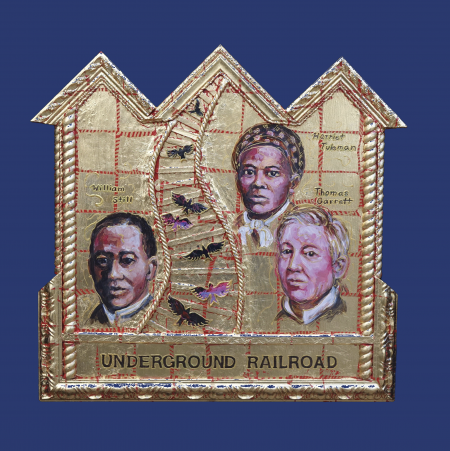I was a conductor on the Underground Railroad for eight years and never ran my train off the track and never lost a passenger – Harriet Tubman
I haven’t a dollar in the world, but if you know a fugitive slave who needs a breakfast, send him to me – Thomas Garrett
It was my good fortune to lend a helping hand to the weary travelers flying from the land of bondage – William Still
The Underground Railroad was a network of people and places by which escaping slaves traveled on their dangerous flights to freedom. The Underground Railroad involved a form of interracial cooperation by which Blacks and Whites worked together to set up safe houses, provide food and encouragement as they conducted the fleeing slaves to destinations in the North. Free Black leaders such as William Still and Frederick Douglass partnered with White abolitionists to assist the fugitive slaves on their way to freedom.
William Still of Philadelphia was one of the most famous Black men to direct an inter-racial vigilance committee in this work. He provided financial support, housing, and employment references for those slaves arriving in Philadelphia, many of whom had been guided by Harriett Tubman on their harrowing journey. Harriett, herself a fugitive slave, returned to the South many times to conduct enslaved people along the Underground Railroad. William Still collected details of escapes of the newly freed slaves in an extraordinary journal, The Underground Railroad, which assisted slaves to be reunited with their families following Emancipation.
Harriet Tubman met Thomas Garrett through William Still. Although as an Underground Railroad conductor she received assistance from many Whites, Garrett played one of the most important roles. His home was a key station on the Railroad. It is reported that he aided some 2,700 fugitives on their way to freedom. He was a great admirer and friend of Tubman whose caravans he constantly sheltered. The two held a common belief about their calling to the work of liberation, each believing that they had a personal calling by God. Garrett remembered the specific moment when “the feelings of humanity were implanted in his breast for this despised race… ” Harriett Tubman replied to those who marveled at her often miraculous escapes from danger, “Don’t I tell you… ‘twan’t me twas de Lord.” She and Garrett often met for tea and conversations. He expressed the depth of their friendship in his letters to William Still when he would describe her as “a noble woman, remarkable, shrewd and courageous.”
Together Harriet Tubman, Thomas Garrett and William Still were a powerful interracial force for justice.

